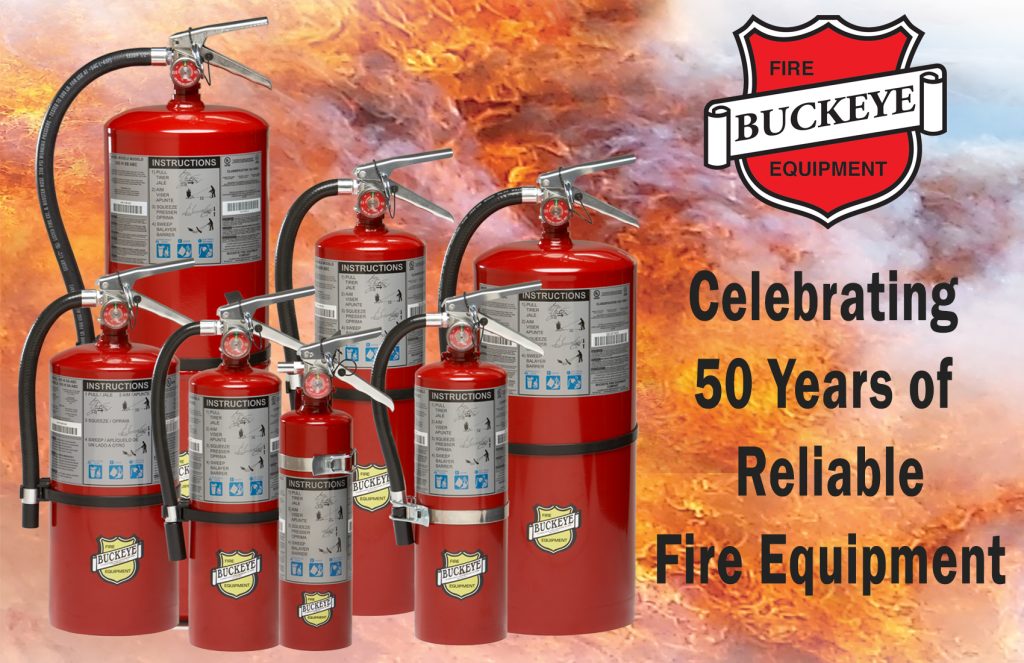Fire Extinguishers
A fire extinguisher is a handheld active fire protection device usually filled with a dry or wet chemical used to extinguish or control small fires, often in emergencies. It is not intended for use on an out-of-control fire, such as one which has reached the ceiling, endangers the user (i.e., no escape route, smoke, explosion hazard, etc.), or otherwise requires the equipment, personnel, resources, and/or expertise of a fire brigade. Typically, a fire extinguisher consists of a hand-held cylindrical pressure vessel containing an agent that can be discharged to extinguish a fire. Fire extinguishers manufactured with non-cylindrical pressure vessels also exist but are less common.
There are two main types of fire extinguishers: stored-pressure and cartridge-operated. In stored pressure units, the expellant is stored in the same chamber as the firefighting agent itself. Depending on the agent used, different propellants are used. With dry chemical extinguishers, nitrogen is typically used; water and foam extinguishers typically use air. Stored pressure fire extinguishers are the most common type. Cartridge-operated extinguishers contain the expellant gas in a separate cartridge that is punctured before discharge, exposing the propellant to the extinguishing agent. This type is not as common, used primarily in areas such as industrial facilities, where they receive higher-than-average use. They have the advantage of simple and prompt recharge, allowing an operator to discharge the extinguisher, recharge it, and return to the fire in a reasonable amount of time. Unlike stored pressure types, these extinguishers use compressed carbon dioxide instead of nitrogen, although nitrogen cartridges are used on low-temperature (–60 rated) models. Cartridge-operated extinguishers are available in dry chemical and dry powder types in the U.S. and water, wetting agent, foam, dry chemical (classes ABC and B.C.), and dry powder (class D) types in the rest of the world.
Inspection Cycles
Fire extinguishers require monthly and annual inspections and maintenance. There are additional tests and inspections required based on your type of fire extinguisher.
- Carbon dioxide and water extinguishers require a 5-year hydrostatic test.
- Stored-pressure extinguishers only require a 12-year hydrostatic test.
- Stored-pressure extinguishers require a 6-year inspection, during which all their internal components are replaced
Common Deficiencies
A deficiency is identified during regular inspections when the devices and components do not meet acceptable standards. Here are a few commonly found deficiencies for fire extinguishers:
- Improper type and/or number
- Inadequate distribution throughout the facility
- Blocked or inaccessible fire extinguishers
- Expired fire extinguisher tag
- Cracked/damaged hose
- Lack of inspection records
- Insufficient employee training
Related Services
- Monthly or Annual Inspection
- 6 Yr. & 12 Yr. Maintenance
- Mount / Bracket Installation
- Repair
- Sales

